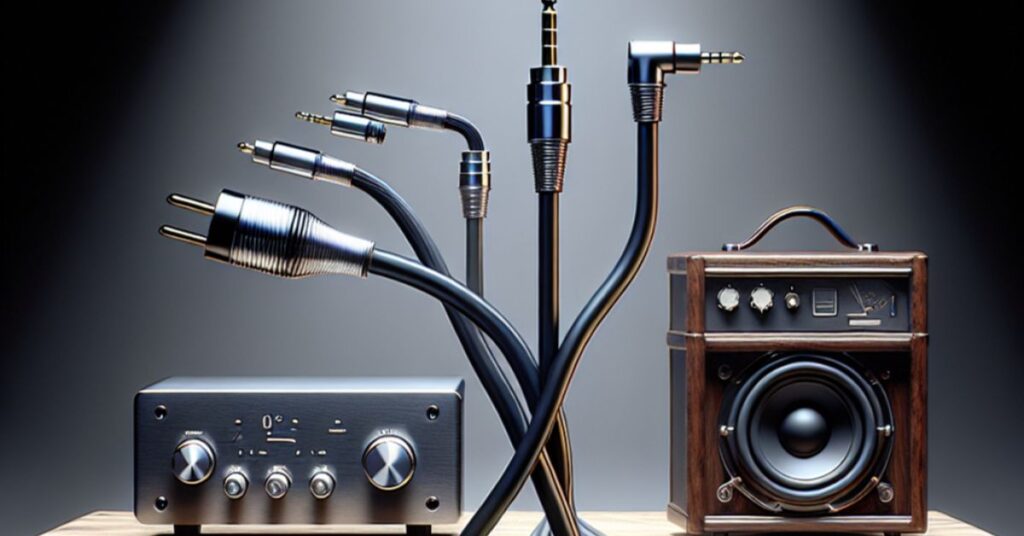In the world of high-fidelity audio, the debate between different digital-to-analog conversion methods has long intrigued audiophiles and sound engineers. Among the various techniques, Non overampling (NOS) stands out as a distinctive approach with its own set of advantages and characteristics. This article delves into the nuances of Non-oversampling, examining how it contrasts with oversampling methods, its impact on audio quality, and why it remains a compelling choice for audio enthusiasts.
What is Non Oversampling (NOS)?
Non-oversampling (NOS) is a method used in digital-to-analog conversion where the audio signal is converted directly from its digital form to an analog signal without undergoing the oversampling process. To understand NOS fully, it’s essential first to grasp the basic concepts of digital-to-analog conversion and oversampling.
In digital-to-analog conversion (DAC), the digital audio signal—composed of discrete samples—is transformed into a continuous analog signal that can be amplified and played through speakers or headphones. This process is crucial for translating digital audio data into sound that can be heard and enjoyed.
Oversampling, on the other hand, involves increasing the sample rate of the audio signal beyond the original rate. This technique aims to reduce distortion and noise by averaging multiple samples, which theoretically improves the quality of the conversion. Oversampling is commonly used in modern DACs to enhance performance and accuracy.
NOS DACs skip this additional step. Instead of performing oversampling, these DACs convert the audio signal at its native sample rate. This approach can lead to a different audio experience, often characterized by its own unique sound quality.
Check Also: Mastering Flanking Strike Macro SOD
The Technical Foundation of NOS DACs
To appreciate the nuances of Non-Oversampling DACs, it helps to understand their technical foundation. Traditional DACs use a process known as digital interpolation to increase the sample rate of the audio signal. This process adds extra samples between the original ones, creating a higher-resolution signal that can theoretically produce a more accurate analog output.
NOS DACs, however, operate differently. They bypass this interpolation step, converting the audio data directly from the original sample rate. The key components of NOS DACs include:
- Digital Filters: NOS DACs often use minimal or no digital filtering, relying instead on the inherent characteristics of the digital signal. This can result in a more direct and unaltered representation of the audio signal.
- Analog Output Stage: Since NOS DACs avoid the oversampling process, their analog output stage is designed to work with the native sample rate of the audio signal. This can lead to a different tonal balance and dynamic range compared to oversampling DACs.
- Clocking and Jitter: Clocking accuracy and jitter—variations in timing that can affect audio quality—are crucial in NOS DACs. Since these DACs do not rely on oversampling, their performance is closely tied to the quality of the original digital clocking.
Comparing NOS DACs with Oversampling DACs
The choice between NOS and oversampling DACs often comes down to personal preference and the desired audio characteristics. Each method has its advantages and potential drawbacks.
Advantages of NOS DACs:
- Simplicity: NOS DACs are often simpler in design, as they do not require complex oversampling algorithms or additional digital filtering. This simplicity can lead to a more straightforward and potentially more transparent sound.
- Unique Sound Signature: Many audiophiles appreciate the distinct sound signature of NOS DACs. The lack of oversampling can result in a more natural, less processed sound, with a different emphasis on tonal qualities and dynamic range.
- Reduced Processing: By avoiding the oversampling process, NOS DACs minimize the digital processing applied to the audio signal. This can lead to a purer representation of the original recording.
Potential Drawbacks of NOS DACs:
- Limited Noise Shaping: Without oversampling, NOS DACs may not benefit from the noise-shaping techniques used in oversampling DACs. This could result in higher levels of high-frequency noise or distortion in some cases.
- Compatibility: NOS DACs are designed to work with the native sample rate of the audio signal. This can be a limitation when working with high-resolution audio formats or sources that require oversampling for optimal performance.
- Technical Challenges: NOS DACs can face challenges related to clock accuracy and jitter. Since they rely on the original sample rate, any imperfections in the digital clocking can affect the overall sound quality.
The Appeal of NOS DACs in Audiophile Circles
NOS DACs have carved out a niche in the audiophile community due to their unique sound characteristics and design philosophy. Many audiophiles are drawn to NOS DACs for their ability to provide a different listening experience compared to conventional oversampling DACs.
Subjective Listening Experience:
The subjective listening experience with NOS DACs can vary widely. Some listeners describe the sound as more natural and organic, with a certain warmth and immediacy that is less apparent in oversampling DACs. Others may appreciate the lack of digital artifacts and the more direct translation of the audio signal.
Historical and Vintage Appeal:
NOS DACs also appeal to those who appreciate vintage or classic audio equipment. The design philosophy behind NOS DACs often aligns with the principles of early digital audio technology, making them an attractive option for enthusiasts interested in the historical aspects of audio engineering.
Notable NOS DAC Models and Manufacturers
Several manufacturers and models showcase Non-Oversampling DACs, each presenting a unique approach to digital-to-analog conversion. Here are a few notable examples:
- Audio Note DACs: Audio Note earns renown for its NOS DACs, which receive praise for their sound quality and adherence to traditional audio principles. They design their DACs to deliver a pure and uncolored representation of the audio signal.
- Denafrips DACs: Denafrips produces several NOS DAC models, including the Ares II and Terminator models. These DACs are known for their build quality and performance, offering audiophiles a range of options for NOS digital-to-analog conversion.
- Metrum Acoustics: Metrum Acoustics offers NOS DACs that emphasize simplicity and directness in their audio output. Their DACs are designed to provide a high level of transparency and fidelity.
Conclusion: The Significance of NOS in Modern Audio
Non Oversampling DACs represent a distinctive approach to digital-to-analog conversion, offering a unique alternative to the oversampling methods commonly used in modern audio equipment. By bypassing the oversampling process, NOS DACs provide a different sound signature and design philosophy, appealing to audiophiles and enthusiasts who value simplicity and authenticity in their audio experiences.
The choice between NOS and oversampling DACs ultimately depends on individual preferences and listening priorities. NOS DACs offer a fascinating glimpse into the world of high-fidelity audio, providing a direct and unaltered representation of digital audio signals. For those who appreciate the nuances of audio engineering and the historical context of digital audio technology, NOS DACs remain a compelling option.







